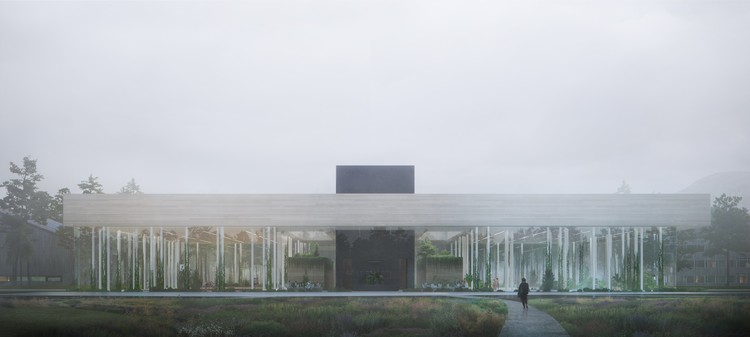
Snøhetta has released images of its proposed sustainable data center concept, named “The Spark.” The project seeks to address the typical high-energy-consuming typology of the data center, transforming it into an “energy-producing resource for communities to generate their own power.”
The proposal is adaptable for a wide range of contexts and can be scaled for any location around the world, fueling connected cities with energy from the center’s excess heat.

The Spark has been designed in response to the exponential growth in global digital data use, with the world’s data storage demands due to reach 44 zettabytes (that’s 21 zeroes) by 2020. Although considered to be floating in “the cloud,” in reality this data is housed in a global network of energy-guzzling data centers, often built in secure isolation from the urban environment, while connected to cities via a network of fiber optic cables.

The Spark reimagines the data center typology as an integral community-orientated part of the “Power City,” energy-positive cities which produce more energy than they consume over a lifetime. The design team describes The Spark as “the body and the brain” of Power Cities, with the brain represented by the storage of data and potential for data-driven urban smart systems, while the body represents the data center’s circular energy concept.
The circular energy concept of The Spark strikes an analogy of blood traveling through the human body, with energy from the data center circulating through buildings and infrastructure. Having gradually lost heat to schools, apartments, sporting facilities, and hospitals, energy returns to the data center and efficiently cools it down.

The heat generated by data centers represents a huge untapped potential in terms of energy capture that we wanted to explore further. By efficiently and sustainably exploiting excess energy that would otherwise go to waste, we can use technology to generously support health, recreation and the environment.
-Kjetil Trædal Thorsen, Founding Partner, Snøhetta

The Spark is capable of reducing the energy consumption of data centers by 40%, in a world where 2% of global greenhouse emissions come solely from data centers. The proposal relies on low-embodied materials such as wood surrounding a structural core made of local stone, giving aesthetic variation depending on location.
For the concept’s development, Snøhetta worked in collaboration with real estate developer MIRIS, Skanska, Asplan Viak, and Nokia. The first pilot study will be located in Lyseparken, Norway, where The Spark’s feasibility will be tested on a real site. If successful, this may make Lyseparken the first energy-positive town in the world. The project joins another major investment in data centers by Norway, with the world's largest and most secure data center set to be built in the northern part of the country.
News via: Snøhetta










